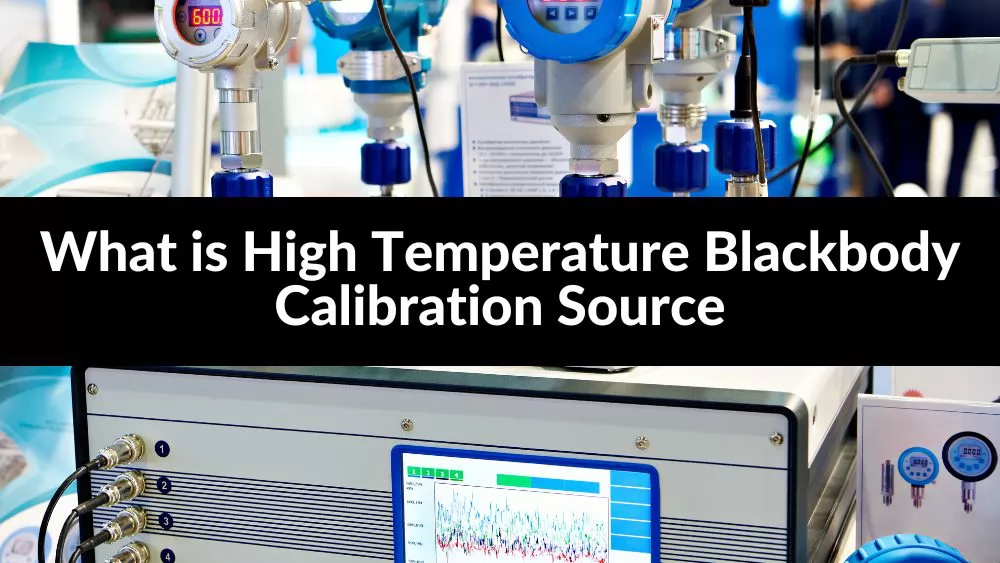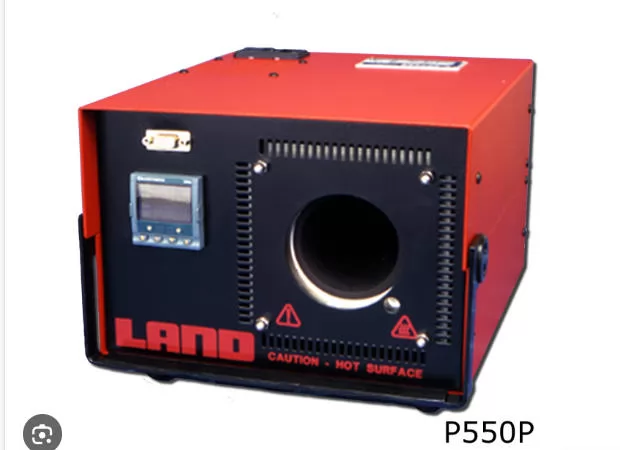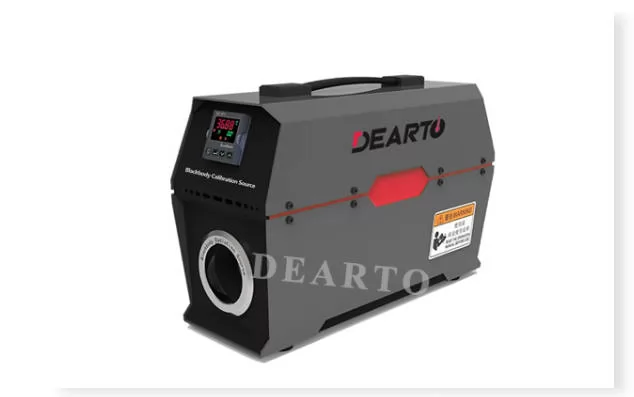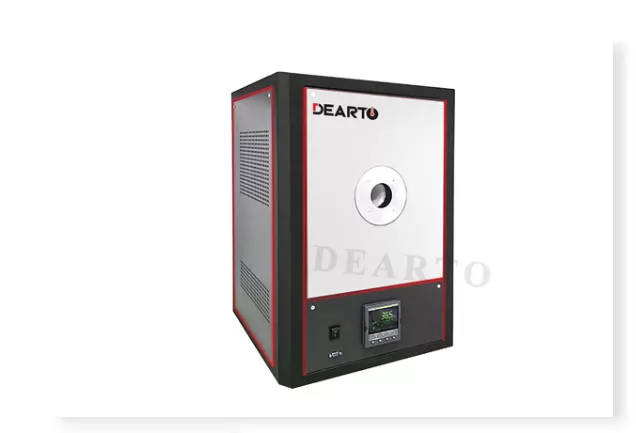
When using temperature calibration in industry and scientific research, there is one indispensable tool: a high-temperature blackbody calibration source. It can effectively ensure the accuracy of experimental data and the effectiveness of the production process - in actual production or scientific research, if the key parameter of temperature is wrong, it may mean that the final result completely deviates from the normal value, and all production Or the experiment will have to be overturned and restarted, which will cause immeasurable economic losses.
In order to write this article, I specifically reviewed relevant literature and consulted relevant industry experts. The content is listed below. Hopefully it will give you a better understanding of high temperature blackbody calibration sources.
List of Contents: |
1. Intro to High Temperature Blackbody Calibration Source
A device utilized for validating the precision of calibration in an infrared temperature sensor is termed a blackbody calibration source. This apparatus relies on a heated or cooled target object with a precisely known temperature to ensure the accurate calibration of infrared pyrometers. The target object may undergo heating processes to achieve the desired temperature.
A blackbody functions as an ideal radiator, emitting thermal energy across both the visible and infrared spectra. The intensity of emitted radiation at a specific wavelength and temperature adheres to Planck's Law of Radiation. With an emissivity value of 1, a blackbody fully absorbs and emits all radiation, exhibiting exceptional non-reflective properties.
While striving for perfection, practical blackbody calibration sources inevitably exhibit an emissivity slightly lower than 1. However, meticulous design can approach this ideal value closely. This discrepancy arises because no material exists that could truly replicate the characteristics of a perfect blackbody.
To ensure accurate calibration, it is crucial to match the blackbody's transmittance with the sensor's emittance setting. Additionally, the sensor should be positioned sufficiently close to the blackbody, ensuring that the recorded spot diameter does not exceed half the opening diameter.
2. Working Principles
The working principle is summarized as follows:
The high-temperature blackbody calibration source adopts a 20° tapered concave cavity structure, which combines high surface emissivity and cavity aspect ratio to provide blackbody radiation through multiple reflections, absorption and re-emission of thermal energy. A ceramic sealed heating coil provides heat energy inside the cavity to evenly heat the cavity cylinder. Typically, these cavities are surface-coated with high-emissivity materials such as graphite or silicon carbide. Heat is generated inside the chamber by an electric heating element or resistive heater, raising the chamber temperature to the desired level. When the cavity reaches thermal equilibrium, it emits radiation proportional to its temperature according to Planck's law, providing a stable and reliable radiation source for calibration. These calibration sources are equipped with temperature controllers and sensors to maintain the required temperature with high accuracy and may contain temperature uniformity control systems to ensure consistent emissivity across the entire emitting surface.
3. Applications
After understanding what a high-temperature blackbody calibration source is and its basic working principle, we should have a preliminary understanding of it. Now we will continue to explore how the high-temperature blackbody calibration source is used in some industries. This will allow us to understand The understanding of high-temperature blackbody calibration sources goes one step further.
Radiation temperature measurement and infrared imaging:
High-temperature blackbody calibration sources can be used as reference sources for radiation thermometers and infrared cameras.
Accurate temperature measurement may be used in industrial production processes, and this is when high-temperature blackbody calibration sources come in handy. For example we may need to temperature control processes in steel manufacturing, glass production and semiconductor manufacturing.
Satellite instrument calibration:
The universe is full of various radiations and rays, which may affect the normal operation of satellites and cause their accuracy to slowly decline. Therefore, satellite equipment requires a professional equipment to maintain its normal operation. The high-temperature blackbody calibration source simulates space The thermal environment can help satellites working in space calibrate data deviations and maintain their normal working status.
New material testing research:
Some materials may exhibit completely different physical or chemical properties at different temperatures. For example, nickel-based alloys and cobalt-based alloys have excellent corrosion resistance and high strength in high-temperature environments; ceramic materials will exhibit corrosion resistance at high temperatures. Excellent wear resistance, corrosion resistance and insulation; high temperature superconductors (such as YBCO) exhibit superconductivity at liquid nitrogen temperatures. At this time, scientists will use a high-temperature blackbody calibration source to control the heating.
It is worth noting that the above are just some examples of the application of high-temperature blackbody calibration sources in some industries. If you want to know more, you can continue to pay attention to our blog article updates.
4. Types of High Temperature Blackbody Calibration Source
Blackbody Calibration SourceBlackbody radiation sources come in various forms, each designed to meet specific calibration and measurement needs. Understanding the different types of black body sources will help you choose the most suitable option for your application. Let's explore the main types of black body calibration sources below:
Hot plate-type: Traditionally, broiler pans are coated with a sleek layer of jet-black paint to enhance their emissivity. These blackbody sources, resembling heated plates, are crafted from sturdy metal sheets that are capable of temperature adjustment. Whether controlled by a basic thermostat or a sophisticated temperature regulator, the temperature of these plates can be finely tuned and maintained. This category of blackbody sources boasts an impressive emissivity value, reaching heights of up to 0.95.
Cavity Type: Representing the pinnacle of accuracy in black body representation, the cavity blackbody is a marvel of complexity. Within its dark confines lies an aperture, a gateway to the external world. Temperature control is meticulously upheld within the cavity, courtesy of a state-of-the-art temperature controller. When light breaches the aperture from outside, it permeates the cavity, undergoing a metamorphosis into thermal energy, aligning with the cavity's inherent radiation. Consequently, only thermal radiation, dictated solely by the cavity's temperature, is permitted to escape. This innovative method holds the potential to yield emissivity values soaring to 0.98 or beyond.

5. Pros and Constraints
Pros:
Provides a stable and reliable radiation source for accurate calibration of temperature measurement instruments.
Offers precise temperature control and uniform radiance across the emitting surface.
Compatible with a wide range of temperature sensors and thermal imaging systems.
Suitable for calibration in both laboratory and field environments.
Constraints:
High initial cost: High temperature blackbody calibration sources can be expensive to purchase and maintain.
Limited temperature range: Some models may have constraints on the maximum achievable temperature.
Requires periodic calibration: Calibration sources need regular recalibration to maintain accuracy over time.
6. What Is the Reference Temperature?
The need to quickly and accurately determine skin temperature for screening drove the development of a highly accurate blackbody calibration source for 38 °C (100.4°F) calibration of infrared thermometers/thermometers and thermal imagers.
The blackbody calibration source provides a trusted reference temperature value for calibrating infrared temperature measurement instruments at 38°C. The blackbody reference temperature is an important requirement for accurate temperature values.
This easy-to-use source helps calibrate infrared thermometers/thermometers and thermal imagers used to monitor and detect elevated skin surface temperatures.
7. Main Parameters
There are several key parameters of a high-temperature blackbody calibration source that determine its performance and its suitability for specific calibration and measurement applications. Let’s discuss the main parameters of blackbody radiation sources:
Temperature Range
The temperature range of a black body radiation source defines the minimum and maximum temperatures it can achieve and maintain. Some sources are designed for specific fixed points, while others offer a broad range of variable temperatures. Choosing the appropriate temperature range is crucial for calibrating instruments with different temperature measurement needs.
Emissivity
Emissivity refers to a material's ability to emit thermal radiation. A perfect black body has an emissivity of 1, meaning it emits radiation as per Planck's law. However, real black body radiation sources may have slightly lower emissivity values. Emissivity affects the accuracy and reliability of the emitted radiation and, consequently, the calibration precision.
Uniformity
Uniformity refers to the even distribution of temperature and radiation within the black body source. Sources with high uniformity ensure that the emitted radiation is consistent throughout the entire surface area, leading to precise and repeatable calibrations. Uniformity is crucial, especially for calibrating instruments that measure across the source's field of view.
Stability
Stability is a critical parameter for black body calibration sources. It refers to the source's ability to maintain a constant temperature and radiation output over extended periods. A stable source ensures consistent and reliable reference values during calibration, reducing measurement uncertainties and errors.
Precision
Precision indicates the accuracy and repeatability of temperature measurements obtained from the black body source. A high-precision source minimizes calibration errors and provides precise reference values, enhancing the overall accuracy of temperature measurement instruments.

8. Calibration Methods for Blackbody Sources
A standard blackbody radiation source is used as a reference and a radiation thermometer is used as a comparator to calibrate the radiation temperature of the blackbody radiation source. First, we calibrate the thermopile infrared sensor using a calibrated standard blackbody. We then calibrate a large-area blackbody radiation source using a calibrated thermopile infrared sensor. The low-temperature blackbody is performed in a vacuum tank, while the medium-temperature blackbody and high-temperature blackbody are performed indoors with the blackbody hatch closed.
9. Future Development Trends
Future advancements in high temperature blackbody calibration sources may include:
Improvements in temperature control technology to attain greater precision and stability.
Integration of advanced materials and coatings to boost emissivity and ensure uniform radiance.
Creation of portable and field-deployable calibration sources for convenient on-site testing and calibration.
As technology progresses, high temperature blackbody calibration sources are anticipated to become increasingly versatile, dependable, and widely available, meeting the expanding needs of diverse industries for accurate temperature calibration solutions.
10. Conclusion
High-temperature blackbody calibration sources serve as essential components in guaranteeing the precision and dependability of temperature measurement tools and thermal imaging systems across various sectors. By comprehending the operational principles, usage scenarios, and critical selection criteria for these calibration sources, individuals can make educated choices to guarantee precise calibration and measurement outcomes. With ongoing technological advancements, the outlook for high-temperature blackbody calibration sources appears promising, with continual enhancements in accuracy, dependability, and portability to address the changing demands of temperature calibration applications.
If you would like to learn more about and purchase products in the field of temperature measurement and calibration, please contact us.




